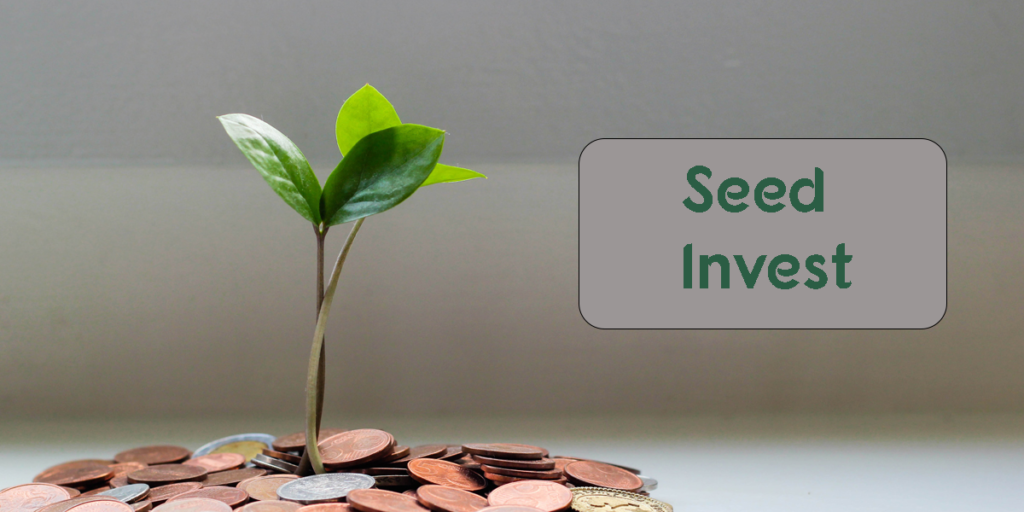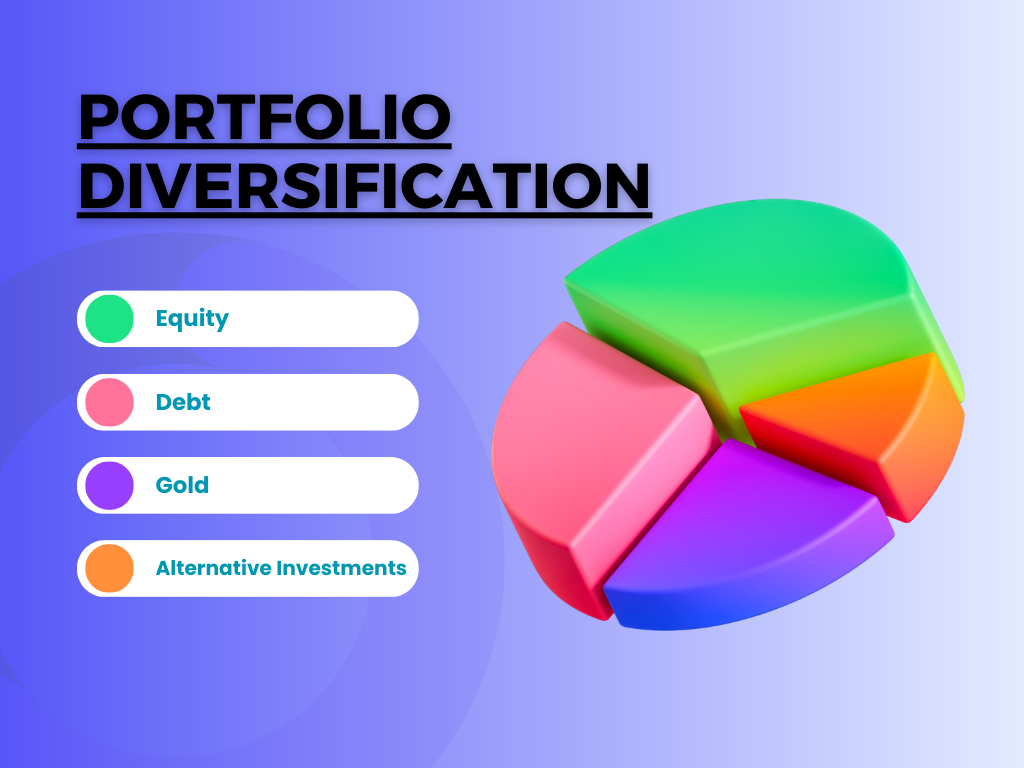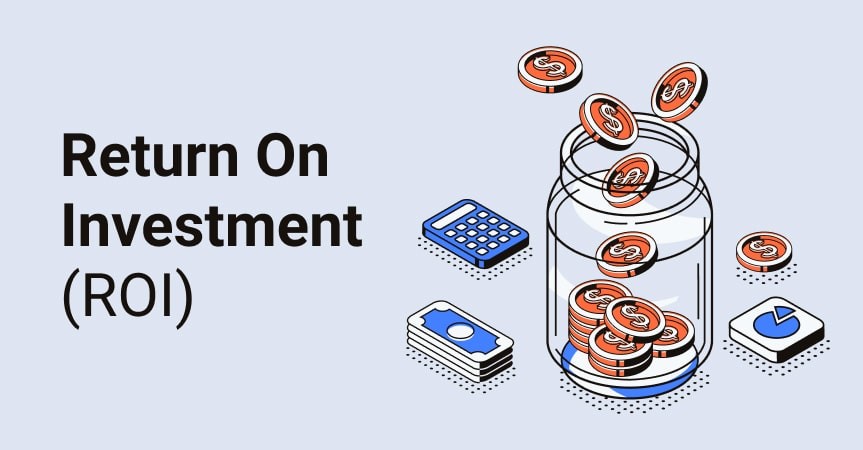Imagine standing at the base of a towering mountain – your dream startup. The climb seems daunting, especially when you’re starting from scratch. That’s where seed invest comes into play.
The journey to launching a successful startup often begins with seed investment. But how does it work? And why is it so crucial in helping startups find their footing?
This isn’t just about getting funds; this post will help you understand what sets seed investing apart, who might be willing to provide capital for your business idea and even guide you through recent developments like the acquisition of SeedInvest by StartEngine.
A question that might pop up:
“What are some key differences between pre-seed and seed investments?”
We’ve got all these covered! Ready for an enlightening expedition into the world of seed investment?
Understanding Seed Investment
Seed investment plays a pivotal role in the life cycle of startups. It’s like the initial boost that helps them get off the ground and start their journey to success. Think of it as planting a seed, which will eventually grow into a fruitful tree.
The concept is simple: seed funding refers to capital provided by investors during the early stages of startup development, often known as pre-seed funding or equity-based financing.
The Role of Seed Investment in Startups
This initial financial injection typically takes form through an equity-based financing arrangement – giving up some ownership stake for necessary funds. The investor puts money into your company expecting future profits when you succeed big time and do seed invest
It’s interesting how this kind of investing works. Like rolling dice on a table; high risk but potentially high reward if you pick the right startup at the perfect timing.
A couple of key stats show just how critical these investments are: 1) they represent the earliest official round where outside investors come onboard with real cash commitment; 2) unlike loans, these deals don’t require repayment unless there’s a profitable exit event such as an acquisition or IPO (Initial Public Offering).
| Key Stats about Seed Investments: | |
|---|---|
| Type Of Funding: | Equity-Based Financing |
| Nature Of Return: | No Repayment Unless Profitable Exit Event Occurs |
We’ve laid the groundwork on why seed investment rounds matter. Now, let’s dive into how these fundings work. Keep in mind what Howard Marks once wisely pointed out: “Success in investing doesn’t correlate with IQ… you need the temperament to control urges that get other people into trouble investing.” This same nugget of wisdom holds true when securing seed investments.
Key Takeaway:
Seed funding gives startups that first capital push to kick off their journey. This investment game is risky but potentially rewarding for those who back new businesses, gaining equity in return. The funds aren’t returned unless there’s a successful exit event like an acquisition or IPO. But remember: being smart isn’t everything – mastering your instincts can also lead you to success.
The Mechanics of a Seed Funding Round
These events, often involving cap, convertible debt, equity, and SAFEs as financial instruments, set the tone for future fundraising endeavors.
Let’s start by understanding how much capital is typically raised. It can range from $500K to $2M—a sizable amount that can propel an early-stage company forward dramatically. But it’s not just about grabbing cash; it’s also about finding partners who believe in your vision and will support you throughout your journey.
Raising seed capital usually involves issuing financial instruments like convertible debt or simple agreements for future equity (SAFEs). Both allow investors to fund startups while deferring the question of valuation until later rounds when more data is available on the startup’s performance.
Convertible debt operates like a loan at first but has potential to convert into equity during subsequent financing rounds. On the other hand, SAFEs give investors rights to acquire stock in future financing round but without interest rate or maturity date—making them less complex than convertible notes.
Picking The Right Financial Instrument For Your Startup
Selecting which instrument fits best depends largely on what suits both founders and investors’ needs—and sometimes regulations too. Founders need flexibility with minimal legal complexities whereas Investors look out for their return prospects alongside safeguarding their investments.
Making Sense Of Valuation Caps And Discounts
A cap sets an upper limit on investor ownership after conversion—an essential feature providing some protection against dilution for early backers especially when companies hit it big.
Discount rates offer another benefit to early investors. They allow them to convert their loan into equity at a rate lower than the one offered in later rounds, providing an additional incentive for taking on early-stage risk.
Wrapping up, remember that seed funding isn’t just about raking in cash—it’s also about forging partnerships and strategically paving the way for your company’s future triumphs. And don’t forget, every startup’s journey is one of a kind—so
Key Takeaway:
Seed funding is a real game-changer for startups. It often brings in between $500K and $2M, but it’s not just about the cash—it’s also about finding supportive partners. Tools like convertible debt and SAFEs let backers support you now while pushing off valuation questions until more data on your startup’s performance comes through. Picking the right tool depends on
Identifying Potential Seed Investors
The hunt for potential seed investors is akin to navigating a dense jungle. You need a guide who knows the terrain, can read signs, and understands how to avoid pitfalls.
One type of investor that startups often look at are angel investors. These individuals typically have high net worth and use their personal finances to support startups. But remember: all angels aren’t heavenly. It’s crucial you check out their track record before jumping into an agreement with them.
Venture Capital Firms: A Bigger Bet?
An alternative path lies through venture capital firms – they’re like the big game hunters of our investment safari. While angel investors might play solo, these guys travel in packs – pooling together money from various sources to fund promising ventures.
The question here is not just about whether they’ll back your startup but also if their involvement will be more hands-on or passive? Will they give you room to breathe or expect regular updates on every minor detail?
Nurturing Your Idea with Incubators & Accelerators
Incubators and accelerators, unlike other seed-stage backers, provide more than just cash injections. They’re like growth-enhancing greenhouses for budding businesses; providing mentorship, office space even networking opportunities alongside funding.
A stat worth considering while identifying potential seed investors is that around 9% of all successful fundraising campaigns were backed by such entities.
Angel Syndicates: Strength in Numbers
Angel syndicates are another investment vehicle worth considering. Here, a group of angel investors come together to pool their resources and knowledge. It’s like having an entire team of expert advisors rooting for your startup.
A word of caution though – while more minds can lead to better decisions, it might also mean more people you need to keep happy.
The Balancing Act
It’s not just about who has what when it comes to finding the right seed investor.
Key Takeaway:
Scoring the perfect seed investor for your startup feels like making your way through a thick forest, with many routes to ponder. Angel investors can be a source of personal finance help, but make sure you check out their history. Venture capital firms gather funds to back startups, but figure out if they’re actively involved or not. Incubators and accelerators give guidance and chances to connect along with funding.
Differentiating Between Seed and Pre-Seed Investments
There’s a thin line between seed and pre-seed investments, but the differences are crucial for startups. While both stages of investment play significant roles in shaping up business goals, their core objectives vary.
Seed Investment Vs Pre-seed Investment
Timing is of the utmost importance in startup circles. So it’s no surprise that even within early-stage financing, there’s an important distinction to be made: seed vs pre-seed funding.
The pre-seed stage often involves smaller amounts – typically less than $500K – aimed at helping entrepreneurs develop their product or service idea into something tangible. At this point, investors want to see potential in your concept more than anything else.
On the flip side lies seed investment. This phase kicks off once you’ve got some proof-of-concept – maybe even initial users or revenue – under your belt. You’re looking to scale fast now; so bigger funds ranging from $500K-$2M might come knocking on your door if you play your cards right.
The objective here isn’t just validation anymore but rather expansion and growth leading towards series A round.
To sum it up:
| Type of Funding | Funds Raised Typically | Main Objective |
|---|---|---|
| Pre-Seed Investment | <$500k | Idea Validation |
| Seed Investment | >$500k-$2M | Growth & Expansion |
Distinguishing between seed and pre-seed stages of a startup’s life cycle is essential for successful fundraising. They signify key stages in a startup’s life cycle, and understanding them can help you better navigate the fundraising journey.
A final piece of advice:
Regardless of your startup journey stage – whether you’re scoping out investment possibilities or getting things up and running, we’ve got your back.
Cracking the code between seed and pre-seed investments? Pre-seed, less than $500K, validates your idea. Seed, $500K-$2M helps scale fast. It’s all about timing in the startup world. #StartupFundingClick to Tweet
The Acquisition of SeedInvest by StartEngine
Big moves were made in the equity crowdfunding sector when StartEngine, led by CEO Howard Marks, acquired the assets of SeedInvest. This bold move not only increased their customer base but also strengthened their leadership position in this growing industry.
SeedInvest, a prominent platform for tech startups seeking seed capital, had created an impressive track record before its acquisition. With over 300 successful fundraisers and $470 million raised from more than 700,000 users, it was no surprise that StartEngine saw value in acquiring these assets.
This acquisition wasn’t just about adding numbers to their user base or investment vehicle options; it’s part of a bigger strategy for StartEngine. The goal? To expand reach among retail investors and founders looking for funding opportunities while strengthening security token efforts – a major trend seen across various crowdfunding sites.
A New Chapter For Equity Crowdfunding Platforms
The impact is far-reaching with implications beyond just these two platforms. This merger signifies how traditional fundraising categories are being disrupted as alternative trading systems like equity crowdfunding gain traction.
Crypto platforms and blockchain startups have taken notice too – the rise of security tokens represents new possibilities they can leverage within this evolving landscape. And let’s not forget about regulatory bodies like Securities and Exchange Commission (SEC) who will need to adapt policies regarding disclosure rules around such securities offerings.
What Does It Mean For Investors?
If you’re an investor eyeing up private companies on equity crowdfunding evangelist platforms such as StartEngine or others alike; there are potential advantages at play here. First off: wider choice – thanks to combining both companies’ portfolios into one powerful offering.
Secondly, there’s the increased trust factor. Knowing that StartEngine is backed by venture capitalists like Howard Marks gives confidence to those who may have been slow in dipping their toes into this investment pool.
A Case Study of Successful Integration
This acquisition serves as a case study for others considering similar moves. It shows how acquisitions can provide capital needed for expansion and increase core business capabilities – something we’ll likely see more of within the crowdfunding framework given its rapid growth rate.
Wrapping up,
Key Takeaway:
StartEngine’s acquisition of SeedInvest is a strategic move in the equity crowdfunding industry, increasing its customer base and solidifying leadership. The merger symbolizes the disruption of traditional fundraising categories as alternative trading systems gain popularity. This provides investors with more choices and trust, while serving as an insightful case study for successful integration.
Case Study – Successful Fundraising Through Seed Invest
When it comes to successful fundraising, few platforms match the prowess of Seed Invest. Let’s explore how startups have leveraged this platform to raise impressive funds.
The Power of Equity Crowdfunding Platforms
Crowdfunding has evolved as a potent alternative for startups looking for seed capital. More specifically, equity crowdfunding sites like SeedInvest are bridging the gap between innovative tech startups and retail investors seeking lucrative investment opportunities.
A Case in Point: The Success Story
Diving into specifics, let’s discuss an instance that reflects the power of this investing vehicle. As per reports, over 300 ambitious ventures have been able to secure their startup capital through SeedInvest.
This isn’t just about a handful of companies raising a few thousand dollars; we’re talking big numbers here. To be precise, these firms collectively raised more than $470 million from around 700K users on SeedInvest.
How Does This Work?
Intrigued by such success stories? Questioning how this all operates?
Startups sign up on platforms like SeedInvest or StartEngine (the latter being another giant in equity crowdfunding sector with its CEO Howard Marks leading from front). Once approved by respective regulatory authority (like Securities and Exchange Commission), they can start their funding campaigns.
Gauging Investor Sentiments & Making Final Decision
The journey doesn’t end at launching your campaign. Startups need to closely monitor investor sentiments during their fundraising category and make data-driven decisions based on trends noticed. All while complying with privacy policy norms set forth by financial industry regulatory authority.
The Bigger Picture
Equity crowdfunding platforms are indeed revolutionizing the fundraising landscape. However, remember that while these platforms provide capital and exposure, they don’t guarantee success. A solid business plan, leadership position within your core business area and consistent efforts towards customer base expansion will play a crucial role in shaping your venture’s net worth.
Looking Ahead: SeedInvest & StartEngine Merger
Remember, always double-check your work to make sure it matches the target language. We’re talking US English here – clear, professional and natural sounding. And don’t forget about those links.
Key Takeaway:
Seed Invest has proven its strength in fundraising, enabling startups to secure impressive capital. With over 300 ventures raising more than $470 million collectively from around 700K users on SeedInvest, the power of equity crowdfunding is clear. However, success isn’t guaranteed just by platform use; a solid business plan and dedicated customer expansion efforts are vital.
Future Prospects for Equity Crowdfunding
The world of equity crowdfunding is evolving rapidly, thanks to a mix of technology advancements and regulatory changes. Recent events such as the acquisition of SeedInvest by StartEngine, one of the leading players in this space, have shaken up the landscape even more.
How Acquisitions are Shaping the Future of Equity Crowdfunding
This acquisition will allow StartEngine to reach an expanded investor community, thus fostering its leadership position in equity crowdfunding. But why does it matter?
A larger customer base means that startups using StartEngine’s platform will get access to a wider pool of potential investors. This increased exposure could help them raise funds faster and at better valuations – exactly what any startup needs.
The SeedInvest deal also signals how important acquisitions can be for growth within this sector. Companies looking to gain market share or add new capabilities might follow suit and make their own strategic purchases.
Taking Advantage Of Regulatory Changes And Tech Innovations
Beyond acquisitions, other factors shaping future prospects include legislative updates like security token offerings (STOs). STOs offer a legal pathway for companies wanting to issue digital tokens tied directly with their assets or profits.
We’re also seeing more traditional finance institutions exploring blockchain technology for issuing securities – think JP Morgan’s experiments with JPM Coin. Such trends highlight an exciting convergence between fintech innovation and mainstream financial services which only bodes well for equity crowdfunding platforms seeking expansion opportunities.
Crowdfunding As A Preferred Investment Vehicle For Retail Investors
Retail investors have increasingly been drawn to private company shares due to their potential for high returns. Equity crowdfunding platforms offer an avenue for these investors to access startup shares that were previously available only to venture capitalists or angel investors.
Moreover, a broader investor base is beneficial for startups as well – it can help them raise capital without diluting their ownership too much. It appears certain that equity crowdfunding will remain a major factor in how startups secure financing and expand their operations.
Key Takeaway:
Equity crowdfunding is rapidly changing due to tech advances and regulatory changes. Acquisitions like SeedInvest by StartEngine let platforms reach a wider investor community, helping startups raise funds quicker at better valuations. Additionally, legislative updates such as STOs and traditional finance institutions exploring blockchain are promising for future expansion of equity crowdfunding platforms.
More and more retail investors are getting curious and keen on investing.
Conclusion
Mastering the seed invest game is like getting a golden ticket to startup success. But it’s not just about gathering funds.
You’ve learned how crucial seed investment is in helping startups get off the ground. It’s your launchpad, giving you that much-needed boost to start scaling those entrepreneurial mountains.
Invest in SAAS investing
We delved into the mechanics of a funding round, highlighting financial instruments such as convertible debt and equity. The nuances between pre-seed and seed investments were also brought under the spotlight.
The acquisition of SeedInvest by StartEngine made headlines for good reason; this move promises exciting developments for both investors and founders alike in equity crowdfunding.
And remember: choosing potential investors isn’t merely about who can write checks – their track record matters too!
Now go out there with these insights and make waves in your venture!
If you want to learn more about this, sign up for my newsletter.


